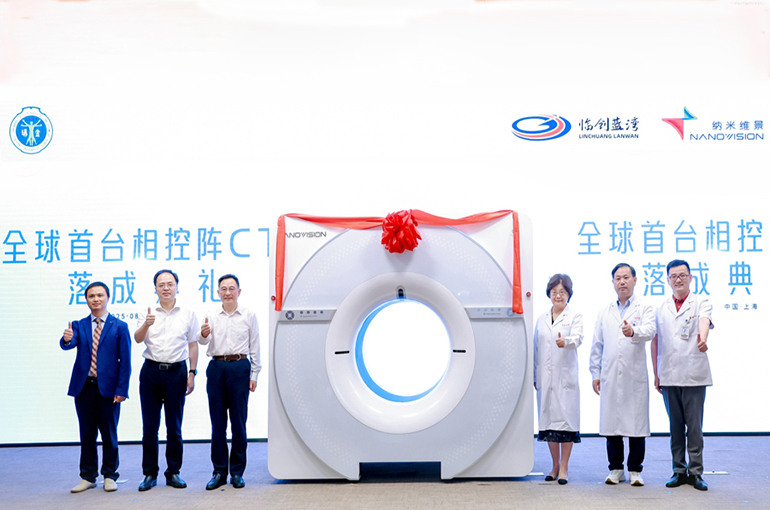 World's First Phased Array CT Scanner to Start Clinical Trials in Shanghai
World's First Phased Array CT Scanner to Start Clinical Trials in Shanghai(Yicai) Aug. 13 -- The first phased array computed tomography device in the world, developed by Chinese high-tech firm NanoVision Technology, has been installed in Shanghai's Ruijin Hospital, which will use it to conduct around 400 clinical tests.
"With this CT device, we can see ultra-high-definition pulmonary pathology imaging," Yan Fuhua, director of Ruijin Hospital's radiology department, said at a commissioning ceremony yesterday. "Such clear images could only be obtained through dissection in the past."
The new scanner can significantly improve the accuracy of doctors' early disease diagnosis thanks to the UHD images of the inside of the body. According to NanoVision, it should obtain a Class III medical device certificate from regulators by the end of this year.
High-end medical devices with higher clarity and lower radiation dose have long been in clinical demand, Yan noted. "Using lung images as an example, the resolution of phased array CT images can reach 3072x3072, far exceeding the 512x512 of conventional CT images, allowing for clear display of lesions and their surrounding structures."
The phased array CT can improve the accuracy of orthopedic minimally invasive surgeries and help create new application scenarios such as full-course management of osteoporosis, Yang Huilin, director of the First Affiliated Hospital of Soochow University's orthopedics department, told Yicai.
The core component of the phased array CT is the "photon stream detector," which uses a unique pulsed exposure scanning method, with image reconstruction achieved via computing power and algorithms, Cao Hongguang, chief scientist of Beijing-based NanoVision, said to Yicai, adding that this enables UHD imaging and reduces the radiation dose by over 50 percent.
NanoVision independently developed the phased array CT scanner, Cao pointed out. Producing its core components in China will likely give a significant boost to the upstream and downstream sectors along the related supply chain, Cao said.
Editors: Tang Shihua, Martin Kadiev